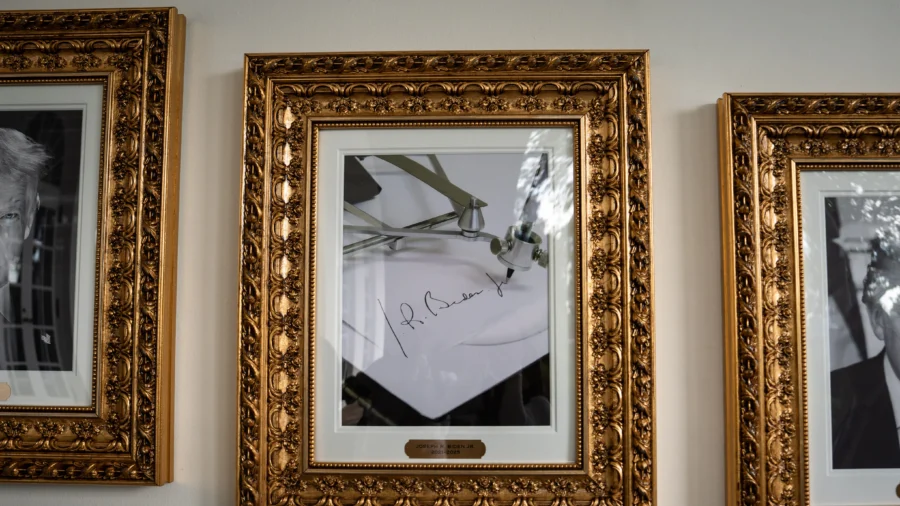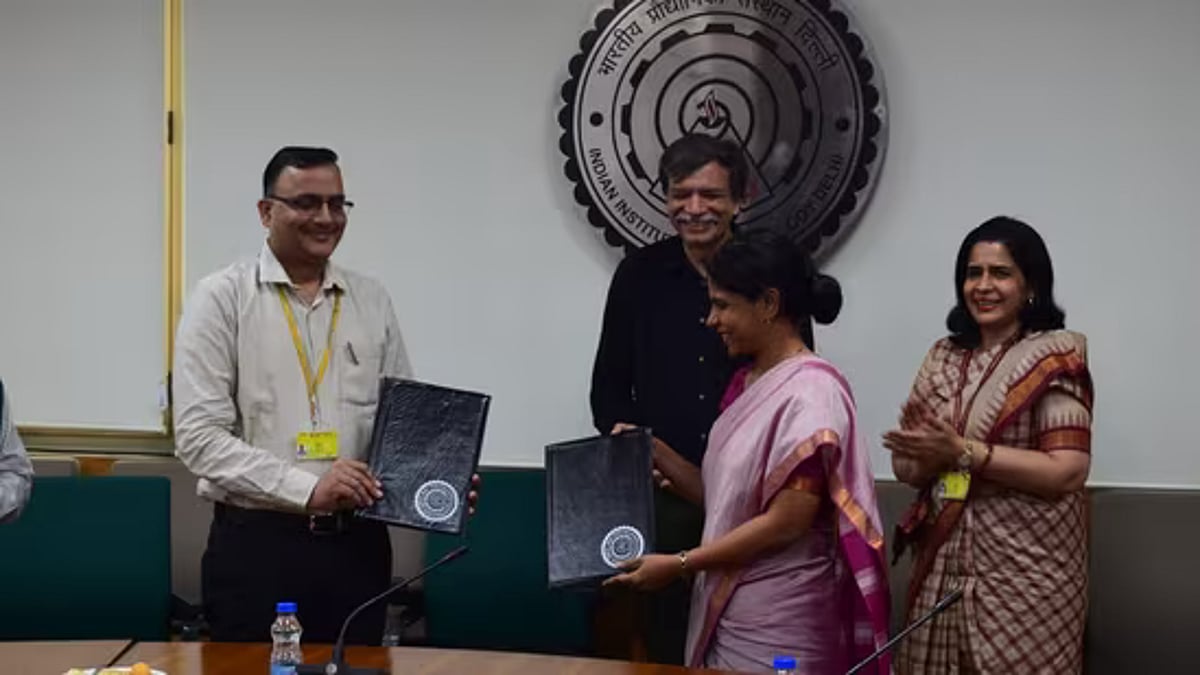Jaisalmer bus fire: Rampant corruption in registrations, substandard fittings, safety rule violations found in inspections, action taken against over 1500 buses
The bus fire near Jaisalmer on October 14, which tragically killed 26 people, was caused by a short circuit in the air conditioning, an official forensic (FSL) report has confirmed. The bus was on its way from Jaisalmer to Jodhpur and had only travelled about 10 kilometres when the fire started. The investigation has completely ruled out any kind of bomb, explosion, or firecrackers. Instead, it points to a “gross negligence” by the people who owned and built the bus. How the fire spread so fast Jaisalmer’s SP (Superintendent of Police), Abhishek Shivhare, explained exactly what the report found. The fire started from a short circuit in the AC’s faulty wiring, which was on the roof and connected to the engine. This caused the air conditioning pipes to fill with thick, poisonous smoke and carbon monoxide gas, which then spread everywhere inside the bus. Before the bus was completely engulfed in fire, passengers were having trouble breathing. They started to suffocate and couldn’t move quickly to get out. In a panic, passengers started breaking the glass windows to escape. But authorities explained that this actually worsened the situation. The fresh oxygen from outside rushed in and “snowballed” the fire, turning the whole bus into an inferno that burned completely in just 5 to 7 minutes. Rumours about explosives are false The police were very clear that rumours about firecrackers or explosives are baseless. The FSL report conclusively proves there wasn’t even a trace of any explosive material. They did find some unburnt firecrackers near the main door and about 35 potash guns (the kind farmers use to scare animals) in the back storage area, but none of them had anything to do with the fire. The bus’s diesel tank and tyres were also completely safe, proving the fire started from a technical fault. A preventable tragedy built on greed This whole tragedy could have been prevented. The investigation found several irregularities that were likely done just to make unethical gains. The AC wiring was installed unsafely, and the materials used to build the bus body were not fire-resistant, meaning they burned very easily. Worst of all, the bus was missing the most basic safety gear. There was no fire extinguisher and no emergency hammers to break the windows. Most shockingly, investigators found that a seat had been placed right at the emergency exit, making it completely useless. Officials said timely inspection and proper technical fitting would have stopped this from ever happening. The government seizes 66 buses from the owner’s factory The Rajasthan government took several actions after the fire. The Transport Department seized all 66 bus chassis from the owner’s (Manish Jain’s) factory, Jainam Coach Crafts Workshop, and is now preparing to cancel their fraudulent registrations. They also launched a 10-day state-wide campaign, inspecting 2,000 buses, which resulted in 398 buses being seized and 1,089 being fined for safety violations. The investigation showed that the owner, who also runs Jain Travels, made several low-quality, dangerous changes to the bus that burned. The bus was illegally modified with an AC unit after being registered as a non-AC vehicle, which overloaded the wiring and caused the fire. Furthermore, the owner violated safety standards by installing an emergency gate that was completely blocked by placing two seats in front of it. The bus’s size was also illegally extended just to add more seats and sleeper berths. RTO officers and builders colluded in registration fraud According to a report by Bhaskar, the investigation revealed a clear collusion between RTO (Regional Transport Office) officers and bus coach builders who were processing fraudulent registrations for these unsafe buses. RTO officials were approving buses that weren’t even finished. At the Jainam workshop, officers found that 26 buses had been registered before their bodies were even built. This fraud was widespread, with these paper registrations filed not only in Rajasthan but also in Arunachal Pradesh, Bihar, Nagaland, and Assam. The report highlights how deep the collusion was, noting that in Rajasthan, “an RTO inspector verified three of the five buses before their bodies were built,” acting as if they were complete, and one of those buses was even fully registered in RTO regions like Jodhpur, Chittorgarh, Sikar, and Bikaner. Three people arrested Because of this gross failure to follow safety rules, police have now arrested three people. The Special Investigation Team (SIT) set up by the government has arrested the bus driver, the bus owner, and Manish Jain, the owner of the factory that built the bus body. The investigation is still proceeding as more details come in.



The bus fire near Jaisalmer on October 14, which tragically killed 26 people, was caused by a short circuit in the air conditioning, an official forensic (FSL) report has confirmed. The bus was on its way from Jaisalmer to Jodhpur and had only travelled about 10 kilometres when the fire started. The investigation has completely ruled out any kind of bomb, explosion, or firecrackers. Instead, it points to a “gross negligence” by the people who owned and built the bus.
How the fire spread so fast
Jaisalmer’s SP (Superintendent of Police), Abhishek Shivhare, explained exactly what the report found. The fire started from a short circuit in the AC’s faulty wiring, which was on the roof and connected to the engine. This caused the air conditioning pipes to fill with thick, poisonous smoke and carbon monoxide gas, which then spread everywhere inside the bus.
Before the bus was completely engulfed in fire, passengers were having trouble breathing. They started to suffocate and couldn’t move quickly to get out. In a panic, passengers started breaking the glass windows to escape. But authorities explained that this actually worsened the situation.
The fresh oxygen from outside rushed in and “snowballed” the fire, turning the whole bus into an inferno that burned completely in just 5 to 7 minutes.
Rumours about explosives are false
The police were very clear that rumours about firecrackers or explosives are baseless. The FSL report conclusively proves there wasn’t even a trace of any explosive material. They did find some unburnt firecrackers near the main door and about 35 potash guns (the kind farmers use to scare animals) in the back storage area, but none of them had anything to do with the fire. The bus’s diesel tank and tyres were also completely safe, proving the fire started from a technical fault.
A preventable tragedy built on greed
This whole tragedy could have been prevented. The investigation found several irregularities that were likely done just to make unethical gains. The AC wiring was installed unsafely, and the materials used to build the bus body were not fire-resistant, meaning they burned very easily.
Worst of all, the bus was missing the most basic safety gear. There was no fire extinguisher and no emergency hammers to break the windows. Most shockingly, investigators found that a seat had been placed right at the emergency exit, making it completely useless. Officials said timely inspection and proper technical fitting would have stopped this from ever happening.
The government seizes 66 buses from the owner’s factory
The Rajasthan government took several actions after the fire. The Transport Department seized all 66 bus chassis from the owner’s (Manish Jain’s) factory, Jainam Coach Crafts Workshop, and is now preparing to cancel their fraudulent registrations. They also launched a 10-day state-wide campaign, inspecting 2,000 buses, which resulted in 398 buses being seized and 1,089 being fined for safety violations.
The investigation showed that the owner, who also runs Jain Travels, made several low-quality, dangerous changes to the bus that burned. The bus was illegally modified with an AC unit after being registered as a non-AC vehicle, which overloaded the wiring and caused the fire.
Furthermore, the owner violated safety standards by installing an emergency gate that was completely blocked by placing two seats in front of it. The bus’s size was also illegally extended just to add more seats and sleeper berths.
RTO officers and builders colluded in registration fraud
According to a report by Bhaskar, the investigation revealed a clear collusion between RTO (Regional Transport Office) officers and bus coach builders who were processing fraudulent registrations for these unsafe buses. RTO officials were approving buses that weren’t even finished. At the Jainam workshop, officers found that 26 buses had been registered before their bodies were even built. This fraud was widespread, with these paper registrations filed not only in Rajasthan but also in Arunachal Pradesh, Bihar, Nagaland, and Assam.
The report highlights how deep the collusion was, noting that in Rajasthan, “an RTO inspector verified three of the five buses before their bodies were built,” acting as if they were complete, and one of those buses was even fully registered in RTO regions like Jodhpur, Chittorgarh, Sikar, and Bikaner.
Three people arrested
Because of this gross failure to follow safety rules, police have now arrested three people. The Special Investigation Team (SIT) set up by the government has arrested the bus driver, the bus owner, and Manish Jain, the owner of the factory that built the bus body. The investigation is still proceeding as more details come in.




























































































